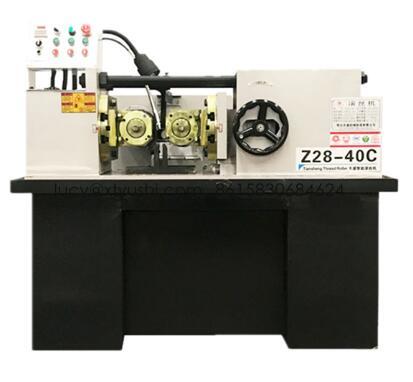Thread rolling is a cold-forming process used to create threads on cylindrical parts by deforming the material under pressure. This method is widely recognized for its precision, efficiency, and ability to produce stronger threads compared to traditional machining methods. As a leading manufacturer of advanced thread rolling machines, Yushi emphasizes the importance of understanding the key factors that influence thread rolling to ensure high-quality output and meet the requirements of modern industries such as automotive, aerospace, and construction.

1. Material Selection
The choice of material is one of the most critical factors in the thread rolling process. Since thread rolling involves deforming the material rather than cutting it, the workpiece material must have good ductility and malleability to withstand the high compressive forces during the process. Common materials used for thread rolling include:
- Carbon Steel: Ideal for producing fasteners, bolts, and screws due to its excellent strength and affordability.
- Stainless Steel: Frequently used in industries requiring corrosion-resistant threads, such as aerospace and medical devices.
- Aluminum and Brass: Suitable for lightweight and decorative applications.
- High-Strength Alloys: Preferred for critical applications in automotive and aerospace industries.
It is crucial to ensure the material is free from defects like cracks, inclusions, or irregularities, as these can compromise the integrity of the threads and lead to failure in high-stress applications.
2. Thread Design and Specifications
Accurate thread design is vital to meet industry standards and ensure compatibility with mating parts. Some important considerations include:
- Thread Profile: The thread shape, such as ISO metric, UN (Unified), ACME, or trapezoidal, must match the specific application requirements.
- Tolerances: Precision tolerances ensure that the threads meet the desired fit and function.
- Thread Length and Pitch: Proper design of thread pitch and length is important for the structural integrity and ease of assembly of the final product.
3. Die Design and Quality
Dies are the heart of the thread rolling process, and their design and quality have a significant impact on thread precision and durability. The following factors must be considered:
- Material of the Dies: High-speed steel (HSS) or tungsten carbide is typically used for manufacturing thread rolling dies.
- Die Geometry: Proper alignment of the die angles, thread profile, and pitch ensures accurate and consistent thread formation.
- Surface Finish: Polished and treated die surfaces reduce friction, improve thread quality, and extend die life.
- Customization: Specialized applications often require custom-designed dies to achieve non-standard thread profiles or unique dimensions.
4. Machine Setup and Maintenance
Proper setup and maintenance of thread rolling machines are crucial for achieving consistent results. Key aspects to consider include:
- Alignment: Correct alignment of the dies and workpiece is essential to prevent defects such as crooked or uneven threads.
- Pressure Settings: The rolling pressure must be optimized based on the material and thread specifications.
- Speed Control: Rolling speed impacts both the quality and efficiency of the process.
- Regular Maintenance: Routine inspection and maintenance of thread rolling machines ensure consistent performance and extend the lifespan of critical components.
5. Quality Control and Testing
Implementing robust quality control measures is essential for ensuring that the threads meet industry standards and customer requirements. Consider the following testing methods:
- Thread Gauging: Use thread gauges to verify the pitch, depth, and diameter of the threads.
- Tensile Strength Testing: Evaluate the strength and durability of the threads, especially for critical applications.
- Surface Finish Inspection: Ensure the threads have a smooth surface finish to reduce friction and wear during operation.
- Dimensional Inspection: Use precision measurement tools to verify dimensional accuracy.
6. Environmental and Cost Considerations
Thread rolling is an environmentally friendly process that generates no material waste, as the material is displaced rather than removed. This makes it a cost-effective alternative to traditional cutting methods. Additional cost-saving benefits include:
- Longer Tool Life: Thread rolling dies last longer compared to cutting tools.
- Faster Production: High-speed thread rolling reduces cycle times.
- Energy Efficiency: Thread rolling requires less energy compared to machining processes.
Industry Data: The Growing Demand for Thread Rolling
According to market research, the global fastener market is projected to grow at a CAGR of 4.5% from 2023 to 2030, driven by increased demand in automotive, aerospace, and construction industries. Companies like Yushi are at the forefront of this trend, offering innovative solutions that meet the evolving needs of modern industries.






